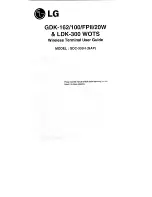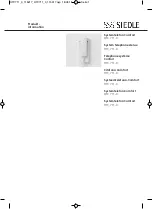
52
MX250 Hardware Manual
Universal Resource Locator (URL).
A standard method of specifying the location of an internet
resource. Also referred to as a location or address, URLs specify the location of files on servers. A
general URL has the syntax protocol://address. For example, http://www.zultys.org/index.html
specifies that the protocol is http and the address is www.zultys.org/ index.html.
Unshielded Twisted Pair (UTP).
Also known as 10BaseT. This is the standard cabling used for
telephone lines. It is also used for Ethernet connections.
Untrusted Network.
Networks that are outside of your security perimeter; Private and shared
networks over which you have no control over the administration or security policies. Firewalls
deal with the problem of communicating with these networks while protecting your trusted
network.
User Agent.
A SIP logical entity that can act as both a user agent client (UAC) and user agent server
(UAS). The role of UAC and UAS, as well as proxy and redirect servers, are defined on a
transaction-by-transaction basis. For example, the user agent initiating a call acts as a UAC when
sending the initial INVITE request and as a UAS when receiving a BYE request from the calling
station. Similarly, the same software can act as a proxy server for one request and as a redirect
server for the next request.
User Agent Client.
A SIP logical entity that creates a new request, and then uses the client
transaction state machinery to send it. The role of UAC lasts only for the duration of that
transaction; if a piece of software initiates a request, it acts as a UAC for the duration of that
transaction. If it receives a request at a later time, it assumes the role of a user agent server to
process that transaction.
User Agent Server.
A SIP logical entity that generates a response to a SIP request. The response
accepts, rejects, or redirects the request. This role lasts only for the duration of that transaction; if
a piece of software responds to a request, it acts as a UAS for the duration of that transaction. If it
generates a request later, it assumes the role of a user agent client to process that transaction.
User Datagram Protocol (UDP).
A communications protocol that offers a limited amount of
service when messages are exchanged between computers in a network that uses IP. An
alternative to TCP, UDP uses the IP to transfer a data unit between computers without dividing it
into packets and reassembling it at the other end. Because UDP does not provide the sequencing
of packets, the application program that uses UDP must be able to verify that the entire message
has arrived in the proper order. UDP is in the Transport Layer (or Layer 4) of the OSI
communication model. The ZIP 4x4 phone supports UDP as defined in RFC 768 for SIP signalling.
Virtual Local Area Network (VLAN).
A Local Area Network that maps workstations on a logical
basis (such as department or primary application) rather than by physical location. VLAN
members are not identified by their location on a physical subnetwork but through the use of tags
in the frame headers of their transmitted data. VLANs are described in the IEEE 802.1Q standard.
Virtual Private Network (VPN).
A method of using the Internet to provide remote offices or
individual users with secure access to their organization's network. A virtual private network can
be contrasted with an expensive system of owned or leased lines that can only be used by one
organization. The goal of a VPN is to provide an organization with the same capabilities, but at a
much lower cost. VPNs are possible because of technologies and standards such as tunneling,
screening, encryption, and IPSec.
Wide Area Network (WAN).
A geographically dispersed telecom network. Although a WAN may
be privately owned, the term usually implies the inclusion of public networks.
Summary of Contents for MX250
Page 10: ...6 MX250 Hardware Manual ...
Page 24: ...20 MX250 Hardware Manual ...
Page 34: ...30 MX250 Hardware Manual ...
Page 46: ...42 MX250 Hardware Manual ...
Page 60: ...56 MX250 Hardware Manual ...







































